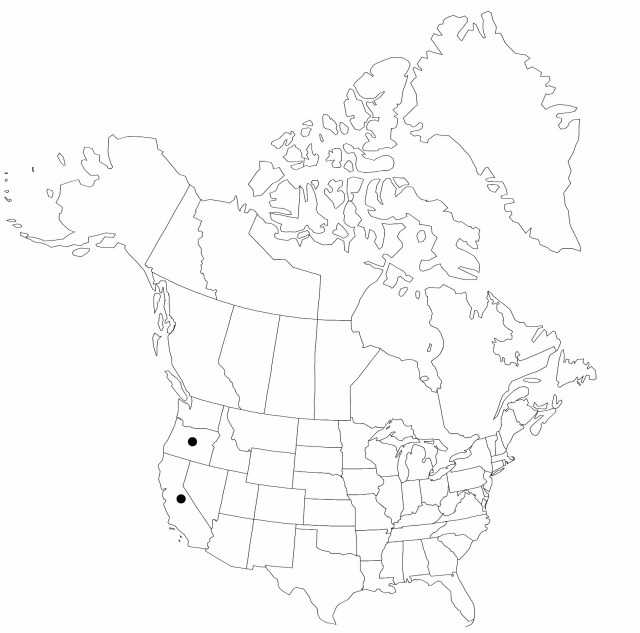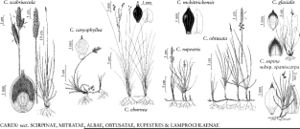Carex scabriuscula
Bull. Torrey Bot. Club 35: 268. 1908.
Plants cespitose; rhizomes never conspicuous. Culms erect, (30–) 35–65 cm. Leaves: sheaths and bases from previous year’s leaves persistent; ligules rounded; blades glabrous adaxially. Inflorescences unispicate and multispicate (often with 1–2 short-peduncled lateral spikes of same sex), mostly erect, ellipsoid; primary inflorescence bracts leaflike, rarely scalelike, equal to or longer than inflorescences. Scales redbrown to purple, lanceolate, to 3 × 1 mm, shorter than perigynia, margins hyaline, central midrib extending to scale apex, apex acute. Perigynia purple-black, lanceolate, (2.5–) 3 (–4) × (1–) 1.6 (–2.5) mm, narrower than subtending scale, apex tapering, distal 1/3 with few short hairs; beak 0.5 mm, orifice oblique; rachilla absent. Achenes to 2.8 × 1.4 mm, loosely enveloped by perigynia, occupying 1/3–2/3 width and 1/3–3/4 length of perigynia. 2n = 58.
Phenology: Fruiting late May–Jul.
Habitat: Serpentine soils
Elevation: 1000–2000 m
Distribution

Calif., Oreg.
Discussion
The type locality for Carex scabriuscula is not known. Type specimens refer only to a wet meadow in the Cascade range. Searches, using information from Cusick’s notebooks, have not relocated the species in the Cascades.
The sectional alignment of this taxon also is problematic. Historically, it has been placed in the Scirpinae; ongoing research suggests it should be excluded from the section based on its atypical pubescence, chromosome number, leaf anatomy, multispicate inflorescences, and unique achene micromorphology.
Selected References
None.
Lower Taxa
"shortened" is not a number."narrower" is not a number.
